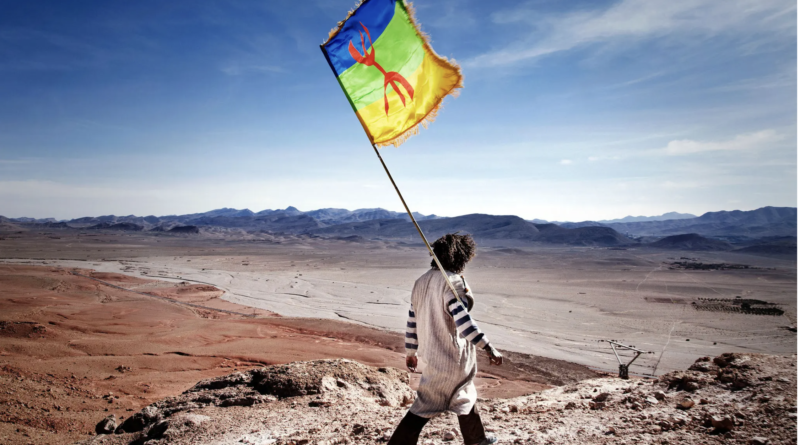The Flag Unifying the Maghreb Countries
The Amazigh flag is a symbol of pride and cultural identity for the Amazigh people, known as Imazighen (free people), of North Africa. The flag consists of a horizontal tricolor of blue, green, and yellow, with a red star in the center.
The blue represents the Mediterranean Sea, which has played a significant role in the history and culture of the Amazigh people. The green represents the lush vegetation of the region, and the yellow represents the desert sands. The red letter ⵣ (pronounced “yaz” or “z”) in Tifinagh is a symbol of resistance, and represents the struggle of the Amazigh people for recognition and self-determination.
The Amazigh flag was officially adopted by the Amazigh World Congress in 1998, and it has since become a widely recognized symbol of Amazigh identity. It is often displayed at cultural events, celebrations, and demonstrations, and it is also frequently used as a symbol of resistance to colonialism and oppression.

In a few days, the Amazigh people will be celebrating the start of the new Amazigh year. This annual celebration, which takes place on January 12th, marks the beginning of the agricultural cycle and is a time for family and community gatherings. It is a time to reflect on the past year and to look ahead to the future with hope and determination.
The Amazigh flag is a symbol of pride and cultural identity for the Amazigh people of North Africa, as it now represents the rich culture and history of its people and the region. It is also an important symbol to be celebrated and honored during the new Amazigh year according to recent customs. The flag stands as a testament to the resilience and strength of the Amazigh people, and it serves as a reminder of the important role that they have played and continue to play in the history of North Africa.

